It’s not news to anyone that the American food scene is always changing. From cronuts and coney dogs to bacon-on-a-stick, American cuisine has its fair share of diverse dishes and American classics.
But when you’re stuffing your face with a cheesy, bacon-y burger, ever wonder what American food really tasted like back in the day?

Gif courtesy of amc.com
Whip out your powdered wigs and fancy bibs, it’s time for a brief history lesson on what was on our Founding Fathers’ plates (and, of course, in their mugs).
Alcohol
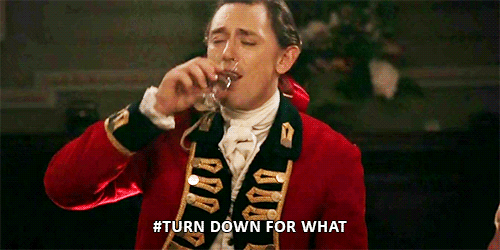
Gif courtesy of amc.com
First of all, it’s really no secret that practically all of 18th century colonial society liked to drink. And by “like,” I mean “practically only drank alcohol.”
Water sources were generally poor, especially in the swampy Chesapeake region, so most colonial men consumed the majority of fluids through beer, meade, cider, and the like. Not to mention they were still growing hella tobacco (the word “detox” didn’t come to fruition until the 20th century).
Some founding fathers were so passionate about it, they brewed their own beverages *cough Sam Adams.* Even John Adams periodically hoarded his barley crop to make sure he had enough for him and his founding friends.
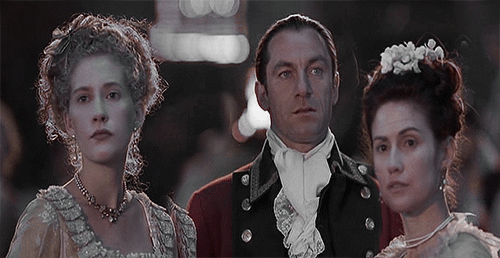
Gif courtesy of sonypictures.com
So basically, everything the founding fathers ate were just drunchies? Not quite. But if you want to look at it that way, they probably went straight for some hot hoecakes or some fried fish and potatoes after a long day of, uh, “constitution drafting.”
Meat and Dairy
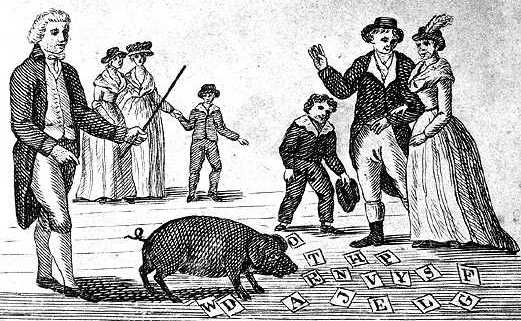
Photo courtesy of chesapeake.edu
Contrary to one of our national emblems, beef, cheese, and especially the fresh veggie toppings on a classic burger were just about unimaginable in the 1700s.
Cattle was not really introduced as a staple commodity until the late 18th century, so colonists got their gainz from venison, turkey, and mutton.
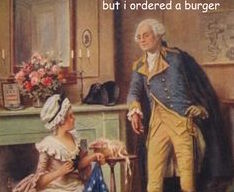
Photo courtesy of ladyhistory.tumblr.com
The lack of cattle also meant dairy sources were limited only to consumption by colonial elites who could afford expensive products sporadically produced in the colonies. Cow’s milk may have been hard to come by, but even farmers could do with some of their own goat’s milk to make dairy products.
Colonists who could afford to raise pigs got a lot of bang for their colonial buck. With butter being hard to come by, pork fat was the primary fat used for cooking. Of course, bacon was a cheap cut that was (and still is) loved by all (and no, it has nothing to do with the 17th century uprising).
Fish
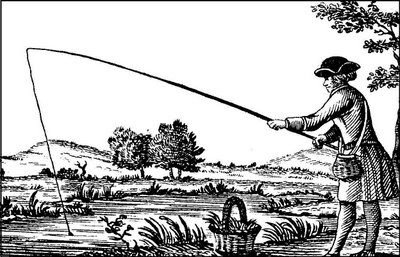
Photo courtesy of americangardenhistory.blogspot.com
Lobster, crab, and oysters are not by any means new East coast delicacies. Sure, your average colonial Joe probably didn’t have a lobster feast every night, but among colonial elites — salmon, scallops, clams, and other Chesapeake and North Atlantic submarine staples could often be found weekly at colonial feasts.
Check out some of these recipes to get a sense of how they best prepared the freshest of the fruits de mer.
Traditional Dishes
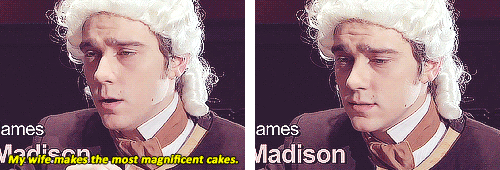
Gif courtesy of youtube.com
Most traditional colonial dishes were derived from English staples — things like savory pastries, puddings, cakes, stews, and biscuits. The availability of local products (like crab, carrots, cabbage, etc.) are what made those dishes the foundation of what would eventually become some of the most popular American dishes.
Pies were a popular dessert across the colonies, with fillings that ranged by region, from blueberry pie in New England and apple and cherry pie in the Mid-Atlantic and Chesapeake.
Cobbler was pretty popular in the South, but both desserts grew popular among colonists because most lacked the means of replicating English dishes such as suet.
Besides all-American pie and cobbler, Mrs. Adams and her fellow Founding Wives whipped up some mean hoecakes (a.k.a pancakes), greens and bacon (Southern staple, of course), potato stew (clam chowder, anyone?), and even fried chicken. Because nothing preps you for some revolution like hearty home-style food.
Founding Food Culture

Photo courtesy of historycentral.com
Colonial cuisine by no means stops there. French, Dutch, Indian, Caribbean, even Spanish colonial cultures all had an effect on the shaping of the food culture in the colonies.
Keep in mind that the appetites of the Founding Fathers provide a good interpretation of the elite colonial class — that is, those who could afford the crops, harvesters, fishermen, hunters, bakers, chefs, and the like to help prepare such extravagant daily meals. The diet of most of the population of the British colonies consisted of simple bread and stewed meat and vegetables.
Still, taking a look at the typical diet of both the majority of the colonial population and our Founding Fathers provides some good insight into the roots of current American culinary culture.
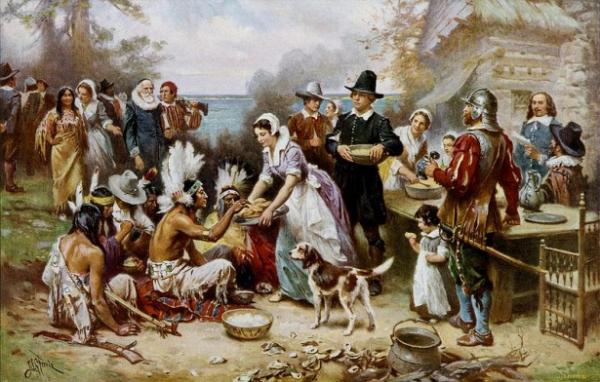
Photo courtesy of indiancountrytodaymedianetwork.com
American food culture is constantly evolving, as all of us well know. The colonies were a hotbed of not only ideas, but food as well. The mélange of British citizens, Dutch traders, Caribbean slaves, and native inhabitants all played some role in determining the diversity of American cuisine. Of course, we still hold crab cakes and cornbread close to our heart.
And despite the fact that our perception of the Thanksgiving holiday isn’t quite exactly what happened between New Englanders and local indigenous peoples, mix up your friends-giving this year by brewing some mulled cider and dishing up some of these dishes, because everyone likes their turkey done #freedom style.


